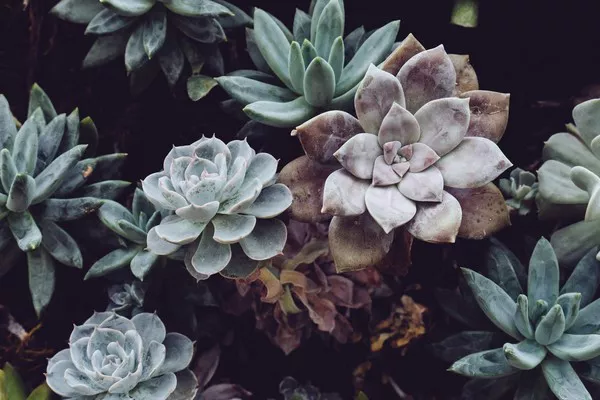Echeverias are beloved succulents prized for their stunning rosette formations and vibrant colors. While they are renowned for their foliage, echeverias also produce delicate flower stalks that add an extra dimension of beauty to these plants. However, knowing how to manage these flower stalks is essential for maintaining the health and appearance of your echeverias. In this comprehensive guide, we will explore everything you need to know about echeveria flower stalks, from their purpose to how to care for them properly.
Understanding Echeveria Flower Stalks
Before delving into how to manage echeveria flower stalks, it’s crucial to understand their purpose and lifecycle. Echeverias are members of the Crassulaceae family and are native to semi-desert regions of Central America. Like many succulents, echeverias have evolved unique adaptations to survive in arid environments.
One such adaptation is their ability to produce flower stalks, also known as inflorescences, when conditions are favorable. Echeverias typically bloom in response to changes in temperature, daylight, or moisture levels. While each species and cultivar may vary in its flowering habits, many echeverias produce tall, slender stalks adorned with small, bell-shaped flowers in shades of pink, red, orange, or yellow.
The Role of Flower Stalks in Echeveria
Flower stalks serve several important functions in the lifecycle of echeverias. Firstly, they are a crucial part of the plant’s reproductive strategy. Echeverias reproduce both sexually, through pollination and seed formation, and asexually, through offsets or “pups” that develop around the base of the mother plant. Flower stalks facilitate sexual reproduction by producing flowers that attract pollinators such as bees, butterflies, and hummingbirds.
Additionally, the emergence of flower stalks can signal a healthy and mature echeveria. In some cases, the appearance of flower stalks indicates that the plant has reached a stage of maturity where it is capable of flowering. This is particularly true for echeverias grown from seed or those that have been recently propagated.
To Remove or Not to Remove: Managing Echeveria Flower Stalks
One of the most common questions among echeveria enthusiasts is whether to remove flower stalks once they have finished blooming. The answer depends on several factors, including personal preference, the health of the plant, and your long-term goals for its care.
Reasons to Remove Flower Stalks
1. Promoting Growth: Removing spent flower stalks can redirect the plant’s energy back into vegetative growth, encouraging the development of new leaves and offsets. This can be particularly beneficial for young or newly propagated echeverias that may need to focus on establishing a strong root system and foliage.
2. Aesthetic Appeal: While the sight of blooming echeverias can be breathtaking, once the flowers fade, the spent stalks may detract from the plant’s overall appearance. Removing these stalks can help maintain a tidy and visually appealing arrangement, especially in containers or garden beds.
3. Preventing Exhaustion: Allowing echeverias to produce seeds can be taxing on the plant, especially if it expends significant resources on flower and seed production. Removing spent flower stalks can prevent the plant from becoming exhausted or depleted, promoting its long-term health and vigor.
Reasons to Retain Flower Stalks
1. Enjoying the Beauty: For many echeveria enthusiasts, the sight of blooming flower stalks is one of the highlights of growing these plants. If you appreciate the natural beauty of echeveria flowers and don’t mind the appearance of spent stalks, there’s no harm in leaving them intact.
2. Encouraging Naturalization: Allowing echeverias to go through their natural reproductive cycle, including seed production, can lead to the naturalization of these plants in outdoor landscapes. This can be desirable for gardeners looking to create low-maintenance, drought-tolerant gardens that support local pollinators.
3. Observing Seed Production: If you’re interested in propagating echeverias from seed, leaving flower stalks intact allows you to observe the seed formation process firsthand. Collecting and germinating echeveria seeds can be a rewarding experience for avid gardeners and succulent enthusiasts.
How to Remove Echeveria Flower Stalks
If you decide to remove flower stalks from your echeverias, it’s essential to do so carefully to avoid damaging the plant. Follow these steps to safely remove spent flower stalks:
1. Wait for the Right Time: Allow the flowers to fade naturally and the stalk to dry out before attempting to remove it. This ensures that the plant has completed its reproductive cycle, and removing the stalk won’t disrupt any ongoing processes.
2. Use Clean Tools: Before cutting the flower stalk, sterilize your pruning shears or scissors with rubbing alcohol to prevent the spread of disease. This helps minimize the risk of introducing pathogens to the plant.
3. Cut the Stalk: Position your pruning shears or scissors as close to the base of the plant as possible and make a clean, diagonal cut to remove the flower stalk. Avoid leaving stubs, as these can attract pests or become points of entry for disease.
4. Dispose of Debris: Once the flower stalk has been removed, dispose of it in your compost bin or green waste collection. Removing spent flower stalks helps maintain a tidy growing environment and reduces the risk of pest infestations.
5. Monitor for Regrowth: Keep an eye on your echeveria after removing the flower stalk to ensure that it continues to thrive. Providing adequate sunlight, well-draining soil, and occasional watering will support healthy growth and development.
Conclusion
Echeveria flower stalks are not only a testament to the beauty of these succulent plants but also play essential roles in their reproductive biology and lifecycle. Whether you choose to remove spent flower stalks to promote vegetative growth or leave them intact to enjoy their natural beauty, understanding how to manage echeveria flower stalks is key to maintaining healthy and thriving plants. By following the guidelines outlined in this article, you can ensure that your echeverias remain vibrant additions to your indoor or outdoor garden for years to come.


